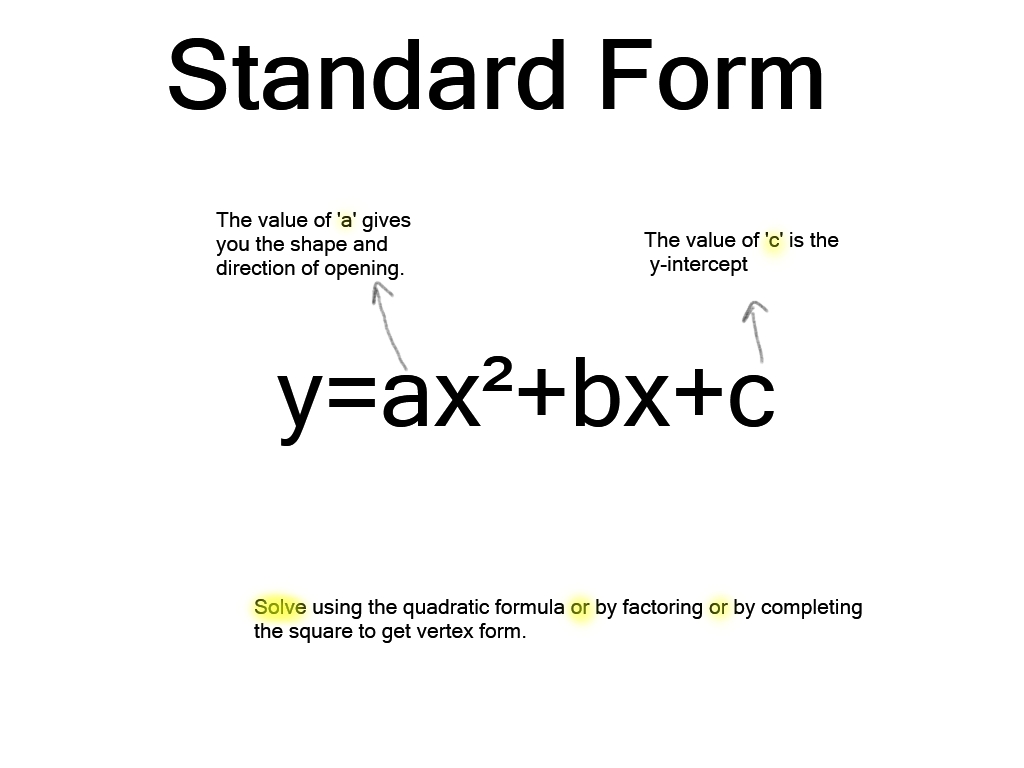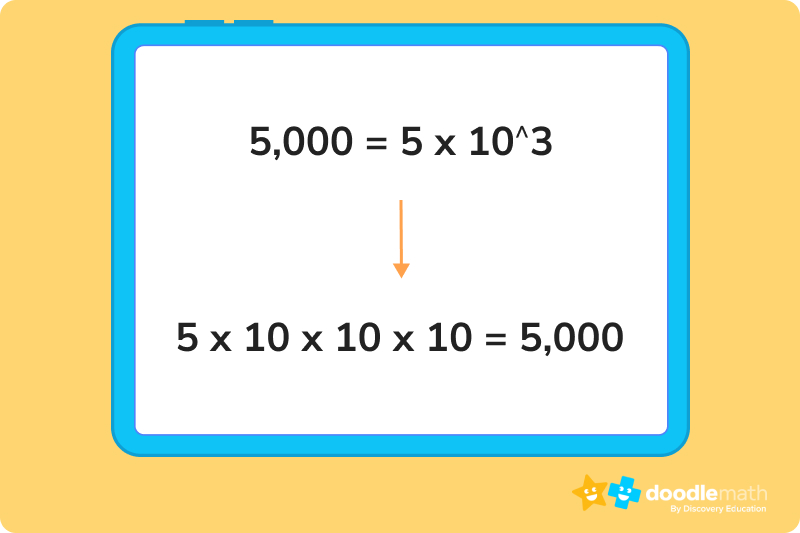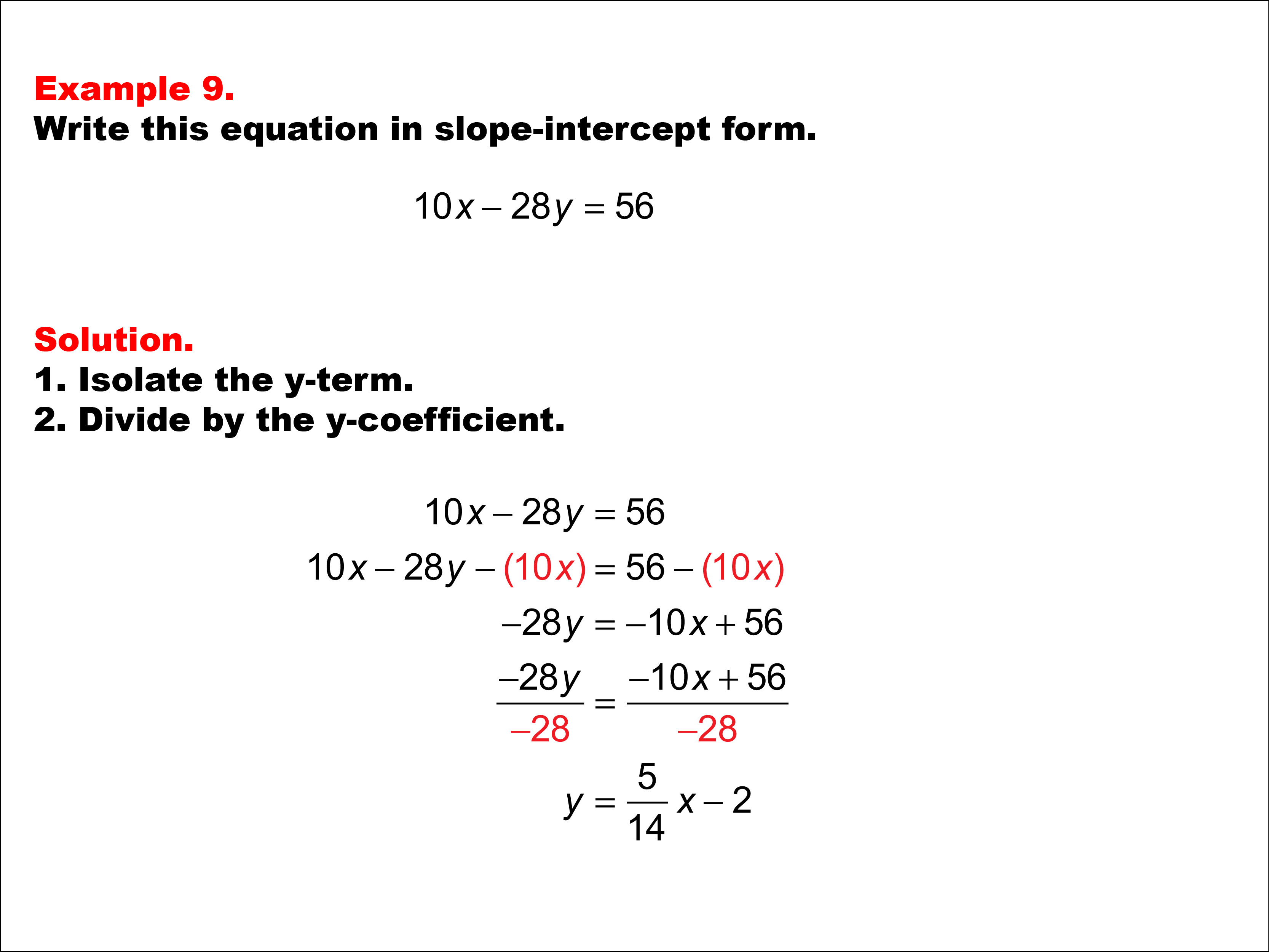Standard Form Explained: Numbers, Equations & More!
Ever struggled to wrap your head around astronomical figures or microscopic measurements? Standard form, a fundamental concept in mathematics and science, provides an elegant solution, making unwieldy numbers manageable and readily interpretable.
Standard form, often synonymous with scientific notation, is a standardized way of representing numbers. It's a cornerstone for professionals in fields like science, engineering, and finance, allowing them to work with extremely large or small quantities without the cumbersome task of writing out endless strings of zeros. This system simplifies calculations and enhances understanding, playing a pivotal role in our modern world.
Let's delve deeper into the specifics. In essence, standard form involves expressing a number as a product of two parts: a number between 1 and 10 (inclusive of 1 but exclusive of 10), and a power of 10. This format, represented as A 10n, where 'A' is the number between 1 and 10 and 'n' is an integer, transforms unwieldy figures into a compact and easily digestible form. This approach provides significant advantages, particularly when comparing or performing calculations with extremely large or small values.
- Dominic Chianese From Sopranos To The Godfather More
- Derivatives Cheat Sheet Your Calculus Quick Reference Guide
For instance, imagine trying to comprehend the distance between the Earth and the Sun, a staggering 149,600,000 kilometers. Writing this in standard form gives us 1.496 x 108 kilometers, a far more concise and comprehensible representation. Similarly, the mass of an electron, approximately 0.00000000000000000000000000000091093837 kilograms, becomes 9.1093837 x 10-31 kg in standard form, simplifying this tiny quantity.
Standard form isn't confined to numbers. It extends its utility to various mathematical concepts, including equations and polynomials. The 'standard form' of a linear equation is typically expressed as Ax + By = C, a format that enables us to easily visualize and analyze the relationship between variables. Polynomials, too, are written in standard form, arranging terms in descending order of their exponents, allowing us to quickly identify the degree and behavior of the polynomial.
The genesis of the concept can be traced back to the need for a universally accepted system to simplify complex numerical representations. While the exact origins remain somewhat obscure, the evolution of standard form is clearly tied to the advancement of scientific and mathematical principles. As scientific endeavors expanded, so did the need for a clear, concise notation for extremely large and small numbers. This need spurred the development and refinement of the standard form, evolving over time to become an essential tool for scientists, engineers, and mathematicians globally.
- Penelope Disick News Pics Updates You Need To Know
- California Net Pay Calculator 2024 Estimate Your Paycheck Now
Standard form provides several notable advantages. Primarily, it reduces the likelihood of errors when dealing with very large or very small numbers. This is because the notation minimizes the need to write down many zeros. Furthermore, the standardization facilitates comparison and calculation. It allows for quick identification of the magnitude of a number through the exponent, streamlining scientific and financial calculations. Beyond these advantages, it enables clearer communication. Scientific publications and technical reports heavily rely on standard form to maintain clarity and avoid any ambiguity in numerical values.
The application of standard form is diverse. It finds extensive use in physics, where it represents quantities like the speed of light (approximately 3.0 x 108 meters per second), and in chemistry, where it describes the incredibly small mass of atoms. In astronomy, standard form is the default method of expressing vast distances and gigantic sizes. Within the sphere of finance, large sums of money, statistical figures and economic indicators can be handled more effectively through standard form.
Understanding how to write numbers in standard form is a basic skill. To convert a number into standard form, identify the non-zero digit with the largest place value. Place the decimal point immediately after this digit, and then multiply the resulting number by a power of 10. The exponent of 10 is equivalent to the number of places the decimal point has been moved. For numbers less than 1, the decimal point is moved to the right, resulting in a negative exponent. For instance, to convert 345,000 to standard form, we rewrite it as 3.45 x 105. For 0.000021, it would be 2.1 x 10-5. These steps are reversible, so converting from standard form back to the conventional form is simple too.
Beyond numbers, the standard form also helps in representing equations and polynomials. Linear equations often take the form of Ax + By = C, which enables an easy determination of a lines slope and intercepts. Quadratics may be expressed in the form of Ax2 + Bx + C = 0. For polynomials, terms are written in descending order of the exponent, simplifying analysis and manipulation. These standard formats make these concepts consistent and predictable, easing learning and utilization.
While scientific notation and standard form are often used interchangeably, it's worth noting their nuances. Scientific notation is predominantly used in scientific and technical contexts, while standard form can also refer to the simplest way of writing a number or equation. In some regions, "standard form" is a general term, while in others, it might be specific to scientific notation. However, the essence remains the same: to represent large and small values in an accessible format.
The impact of standard form stretches across the entire academic spectrum. From elementary school math, where students first learn to convert numbers, to advanced scientific research, where it is essential for data presentation and interpretation, its importance is undeniable. Mastering the technique provides a solid basis for all advanced mathematical and scientific concepts.
In conclusion, standard form stands as a cornerstone of mathematics and science. It has become the accepted standard for representing numeric data. By simplifying the handling of immense and infinitesimal quantities, standard form has opened new avenues for both scientific discoveries and technological innovation. Whether its in the classrooms or cutting-edge research labs, its benefits are obvious. It's not just a convention; it's a key to understanding the complexities of our universe.
| Topic | Details |
|---|---|
| Definition | A method of representing numbers, equations, or polynomials in a consistent and easily understandable format. |
| Purpose | Simplifies representation of very large or very small numbers; facilitates calculations and comparisons; reduces errors; enables clarity in communication. |
| Forms |
|
| Applications | Science, Engineering, Finance, Mathematics, Statistics, and general scientific notations. |
| Benefits | Accuracy, clarity, ease of calculation, universal understanding, and reduction in computational errors. |
| Examples |
|
| Related Terms |
|
| Importance | Essential for working with extreme values, simplifying calculations, and ensuring clear communication in various fields. |
| Conversion | Move the decimal and adjust the exponent. |
The power of standard form, or scientific notation, is further realized in its simplicity of comparison. Comparing numbers written in this form is significantly easier, as the exponents clearly indicate the magnitude of the values. For instance, consider two numbers written in standard form: 3.2 x 107 and 1.5 x 109. Immediately, the larger value, 1.5 x 109, is clearly apparent because the exponent is higher. Without standard form, it's necessary to convert the numbers back to decimal form or to perform more intricate calculations to ascertain their relative sizes, which may lead to errors. Standard form is therefore essential not only for dealing with large numbers but also for quickly and accurately comparing and ranking them.
Standard form is also fundamental in the area of data analysis. When dealing with extensive datasets, scientists, economists, and analysts frequently utilize standard form to condense and summarize data. This method is particularly useful for conveying statistical results, population numbers, or other quantitative measures. It provides a clear, concise method of expressing these figures, which helps analysts to communicate these findings to other professionals and the general public alike. Standard form's capacity to make complicated figures simpler makes it crucial in the interpretation and presentation of information in many domains.
In different regions of the world, there may be slight differences in how standard form or scientific notation is taught and utilized. However, the fundamental principles remain constant: to represent numerical values efficiently and consistently. In some countries, the term "standard form" is exclusively used for scientific notation, while in others, it may denote a variety of forms, such as the expanded notation in elementary mathematics. Regardless of terminology or local traditions, the central concept of applying a clear, universally accepted method of numerical representation remains critical.
As mathematical and scientific concepts evolve, the significance of the standard form is unlikely to diminish. New scientific discoveries, technological advancements, and financial instruments are constantly emerging, increasing the scope and volume of numerical information. This continuous progress only enhances the value of standard form as a fundamental and powerful instrument for expressing, processing, and understanding the complex world around us.



Detail Author:
- Name : Ms. Marta Halvorson I
- Username : andy83
- Email : tyree.eichmann@hotmail.com
- Birthdate : 1996-09-21
- Address : 898 Franecki Row Apt. 560 Peggieborough, HI 86327-5362
- Phone : +18164330273
- Company : Purdy PLC
- Job : Product Safety Engineer
- Bio : Rerum voluptatem est dolore ut voluptas quaerat unde. Qui ut qui voluptatibus voluptatibus. Aliquam et distinctio eos accusamus. Velit necessitatibus corrupti perferendis est laudantium.
Socials
twitter:
- url : https://twitter.com/bergeb
- username : bergeb
- bio : Quibusdam et suscipit ipsum et sint dicta cupiditate. Aut voluptas fugiat quasi voluptatem iste nam. Doloremque architecto sit esse. In modi ut quisquam quis.
- followers : 2958
- following : 578
linkedin:
- url : https://linkedin.com/in/bergeb
- username : bergeb
- bio : Earum corrupti et non quis porro minus.
- followers : 4183
- following : 185
tiktok:
- url : https://tiktok.com/@billie.berge
- username : billie.berge
- bio : Facere consequatur omnis reiciendis odit et quibusdam reiciendis.
- followers : 5086
- following : 622
facebook:
- url : https://facebook.com/billie_xx
- username : billie_xx
- bio : Veniam autem non quidem qui quo et autem. Harum aut nam nihil ut nemo.
- followers : 2223
- following : 2925